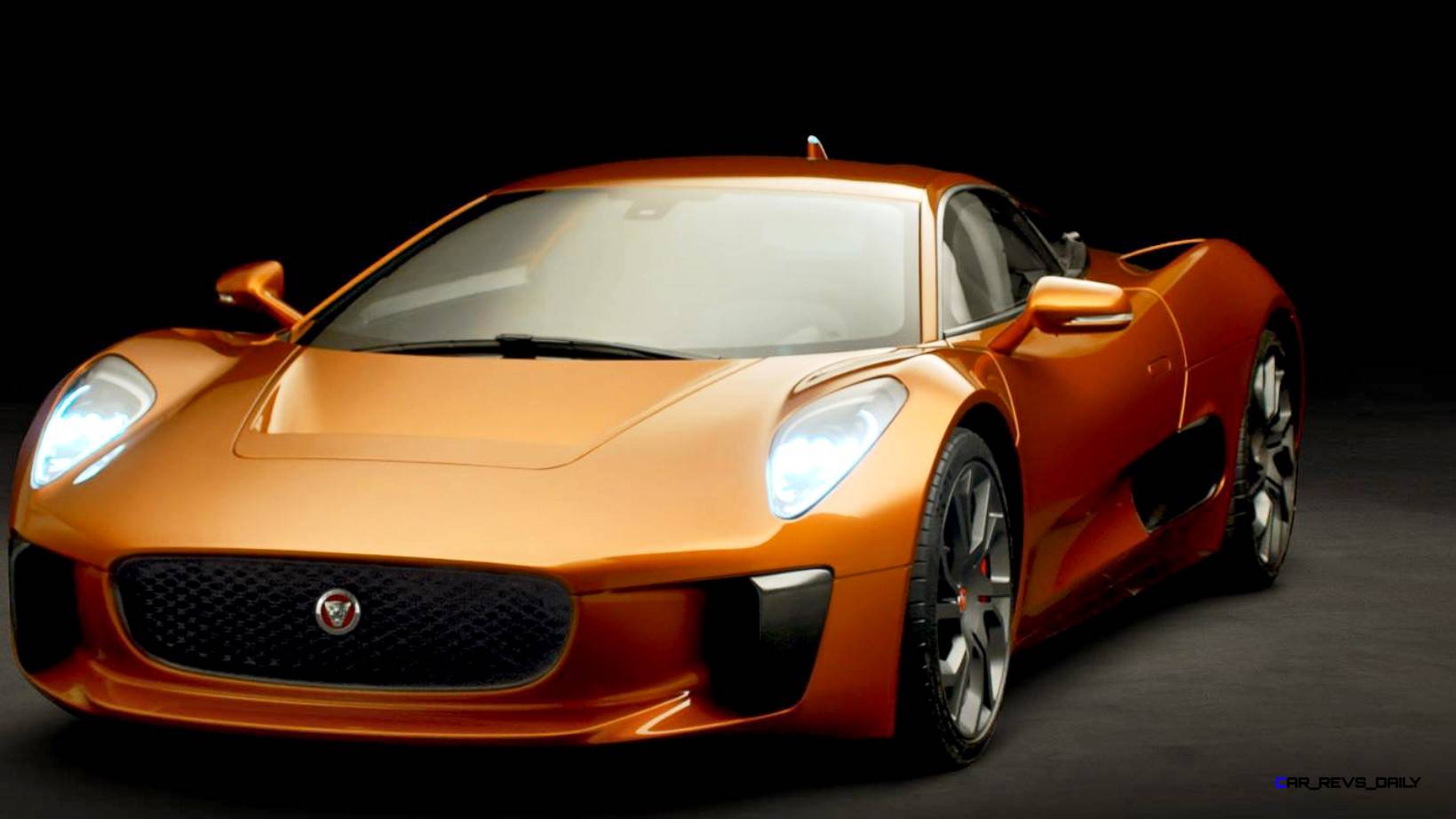

The F-type’s eight-speed automatic gearbox, however, is too long for the C-X75’s mid-engined configuration. It’s a reliable, cost-effective unit that delivers enormous power and torque. Rather than a costly and complicated hybrid drivetrain the C-X75 stunt cars use the 5-litre supercharged V8 from Jaguar’s F-type. The cars have no ABS or traction control, let alone switchable drive modes. The cars are also fitted with hydraulic handbrakes for the most dramatic handbrake turns. Landing the cars softly from jumps was one of the main objectives, so they have long-travel, droopy suspension. Suspended on double wishbones all round the stunt cars use the same springs and dampers as a Porsche 911 GT3 tarmac rally car. The tubing is so thick you could crash into a cathedral and come out the other side in pretty good shape. They’re built around a tubular spaceframe chassis with composite body panels. Working again with Williams Advanced Engineering, Jaguar built five stunt cars. The solution was to build a number of cars specifically for the punishing drift, jump and handbrake turn shots. Ariel Atom 4 review - Britain's exoskeletal track toy just got torquier.2019 Alpine A110 S review - has France's brilliant sports car been spoilt?.Alpina B4 Bi-Turbo Convertible review – Better than an M4?.Alpina B3 Touring 2021 review – the other BMW M3 touring.Alpina D3 S Touring 2021 review – the ultimate daily driver?.Alfa Romeo SZ: history, review and specs of an icon.


Ford Sierra RS Cosworth – review, history, prices and specs.Porsche 911 Carrera S vs rivals: R8, Vantage, 570GT and Evora face off.Porsche 911 Carrera vs Lotus Evora GT410 – sports car showdown.BMW M8 Competition Gran Coupe vs Audi RS7 Sportback – battle of the alt-supersaloon.The C-X75 was handed a lifeline – of sorts – when the producers of the latest James Bond film, Spectre, cast it as the villain car. The C-X75 was on course to go into limited production as a direct rival to the likes of the McLaren P1 and Porsche 918 Spyder, but Jaguar canned the project in 2012, citing the weak state of the global economy. Developed in conjunction with Williams Advanced Engineering – the applied technologies division of the Formula 1 Grand Prix team – that version of the C-X75 used a turbocharged and supercharged 1.6-litre four-cylinder with one motor on each axle.īoth versions were built around a carbon fibre tub. That original concept eventually morphed into a pre-production prototype, which was powered by a more conventional petrol-electric hybrid. These motors were powered by batteries that took their charge from a pair of small gas turbines. The original 2010 show car featured a terrifically complicated hybrid drivetrain that used four electric motors, one driving each wheel.


 0 kommentar(er)
0 kommentar(er)
